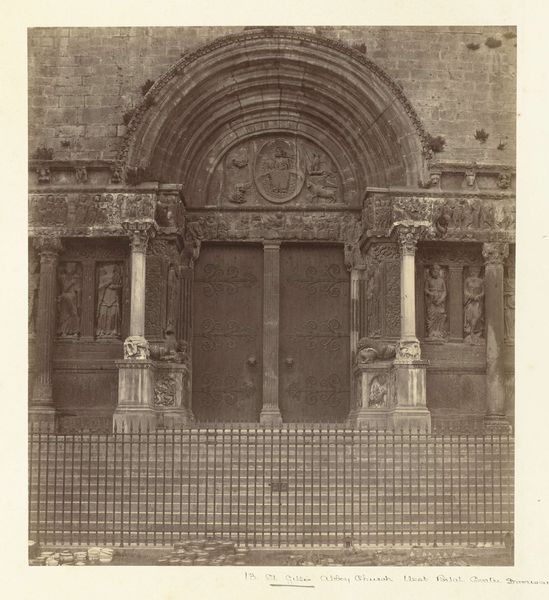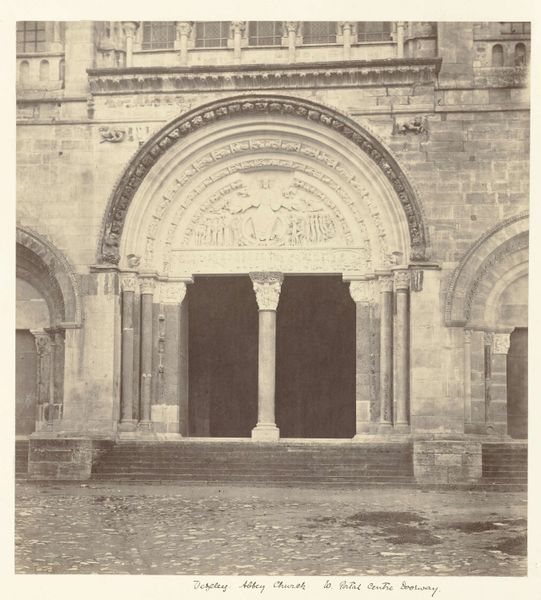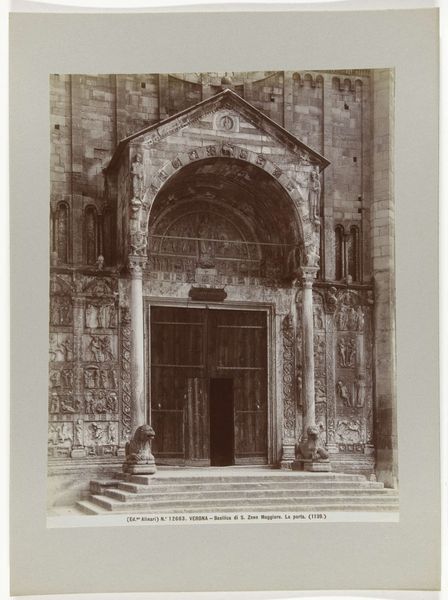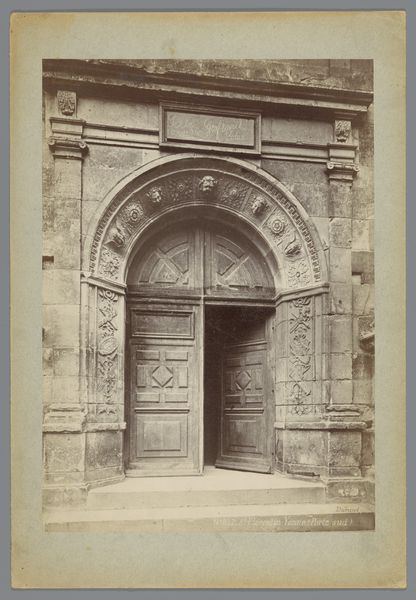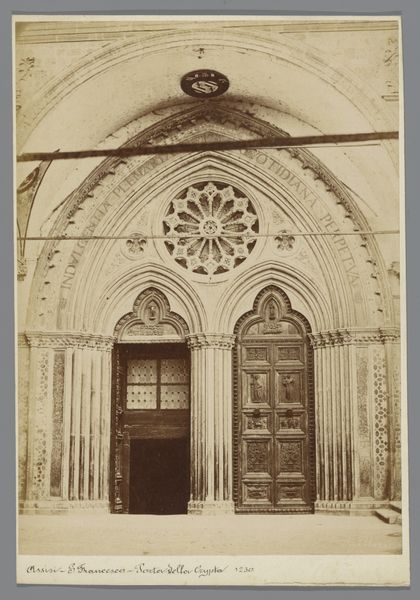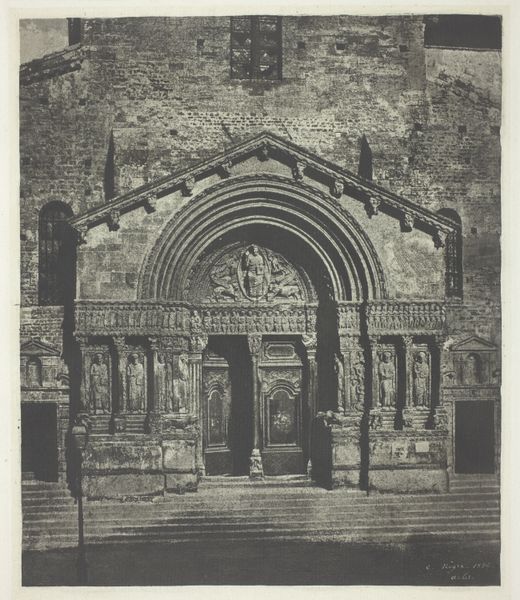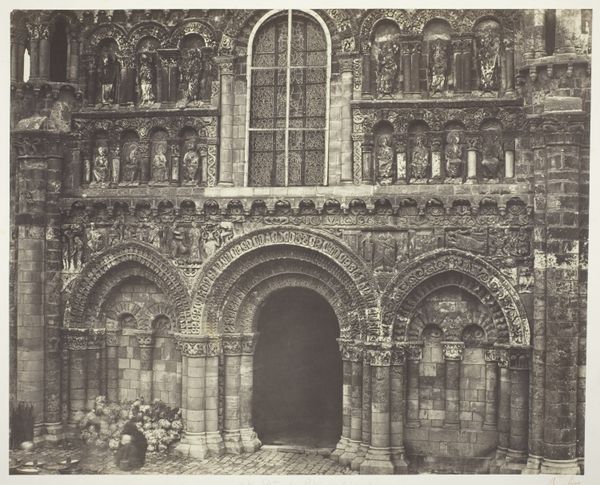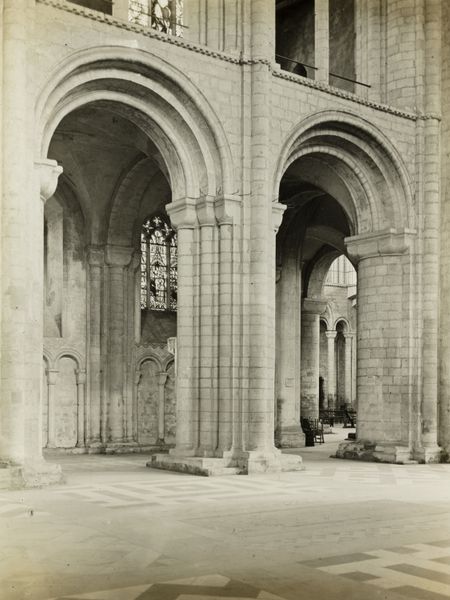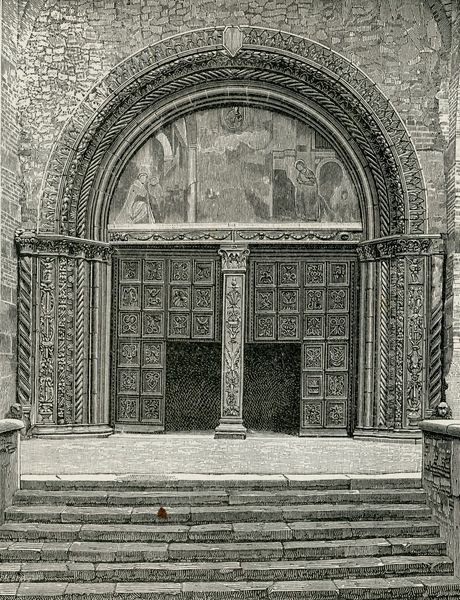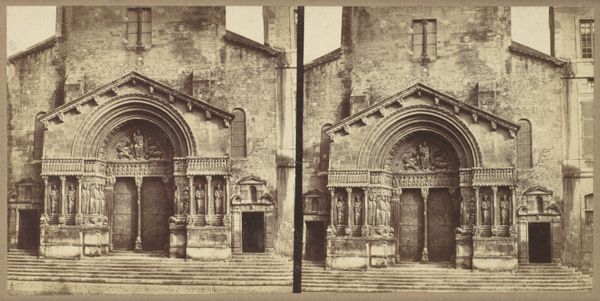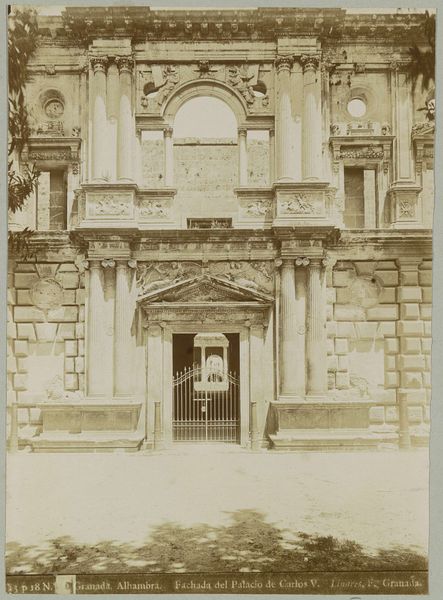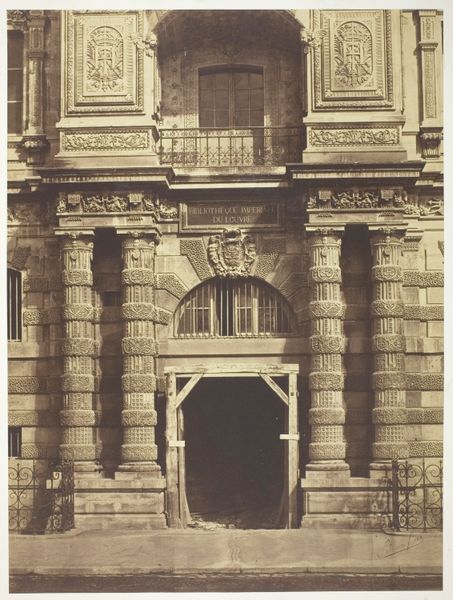
photography, architecture
#
byzantine-art
#
sculpture
#
landscape
#
historic architecture
#
traditional architecture
#
photography
#
geometric
#
19th century
#
architecture
#
historical building
Dimensions: sheet (trimmed to image): 22.4 x 17 cm (8 13/16 x 6 11/16 in.) mount: 36.5 x 27.4 cm (14 3/8 x 10 13/16 in.)
Copyright: National Gallery of Art: CC0 1.0
Curator: Before us, we have a photograph by Alfred Stieglitz, possibly taken between 1894 and 1934, titled "Santi Giovanni e Paolo, Venice." Editor: My initial impression is one of solidity and aged grandeur. The architecture feels immense, permanent—yet the greyscale tones lend it a ghostly, ethereal quality. Curator: Stieglitz, a pivotal figure in promoting photography as fine art, captured this image amidst his broader exploration of urban environments. The photo’s context resides not only in Venice's rich artistic heritage, but also within the debates surrounding photography's place in early 20th-century art circles. Editor: The composition, so formally balanced! The dark, deeply recessed doorway provides a focal point, while the flanking columns and layered archways create a sense of depth and perspective. There’s a masterful interplay of light and shadow here. Curator: Indeed. Stieglitz employed photography to investigate themes present within the larger Arts and Crafts movement—elevating the status of everyday craftspeople to high-art status, such as this beautiful traditional architecture. How the photographic form plays with this social movement, allowing access for viewing across the Western world, shows Stieglitz's awareness and intentions of inclusivity. Editor: Absolutely, and observe how he employs geometric forms to reinforce this feeling. Notice how Stieglitz has positioned the doorway to act like a sort of threshold, a moment where material transforms to ethereal and where our expectations should pause as our perception moves into an imaginative space beyond material. Curator: That interpretation resonates with the photograph's capacity to function almost like a historical document. I wonder to what degree, however, we project this reading on to the photograph given the medium's own embedded associations of historical context and time. What are your thoughts on this in this work, regarding time? Editor: I would observe that the timeless feel of the structure's symmetry and its inherent geometry renders our notion of time moot in its all-encompassing wholeness. Curator: An intriguing insight. The power of photographs rest in their documentary abilities that are forever caught between intention and social framing. I appreciate how your focus directs me towards seeing new depths in his work. Editor: And your art-historical lens has widened my gaze into a perspective about a place in a historical moment, not solely appreciating just how timeless structures become aesthetically arresting subjects. Thank you.
Comments
No comments
Be the first to comment and join the conversation on the ultimate creative platform.
